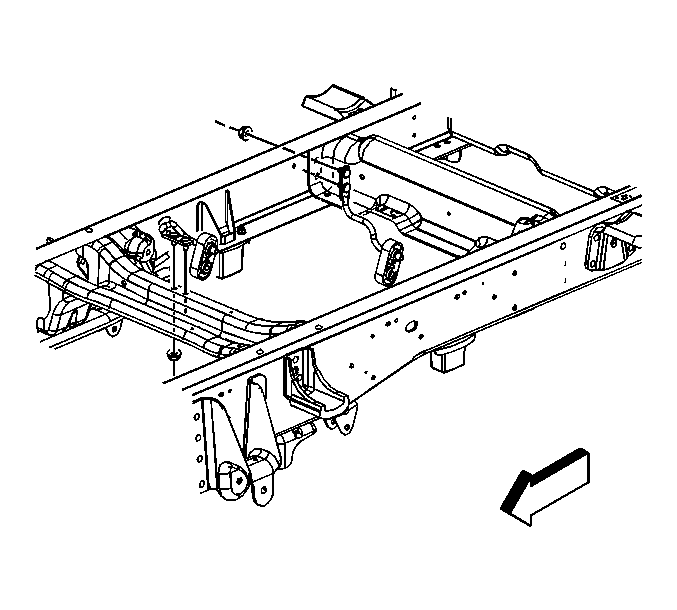Removal Procedure
- Raise and suitably support the vehicle. Refer to Lifting and Jacking the Vehicle in General Information.
- Using a suitable pry bar, remove the applicable hanger pin attached to the pipe from the exhaust hanger insulator.
- Remove the exhaust hanger nut.
- Remove the hanger from the frame.

Caution: In order to avoid being burned, do not service the exhaust system while it is still hot. Service the system when it is cool.
Caution: Always wear protective goggles and gloves when removing exhaust parts as falling rust and sharp edges from worn exhaust components could result in serious personal injury.
Important: Due to the many variables in engines and chassis arrangements, the vehicle may have exhaust hangers located at other locations than shown.

Installation Procedure
- Install the exhaust hanger to the frame.
- Install the exhaust hanger nut.
- Install the exhaust pipe hanger pin in the exhaust hanger insulator.
- Verify the exhaust system for proper clearance and the alignment of all components.
- Lower the vehicle.

Notice: Use the correct fastener in the correct location. Replacement fasteners must be the correct part number for that application. Fasteners requiring replacement or fasteners requiring the use of thread locking compound or sealant are identified in the service procedure. Do not use paints, lubricants, or corrosion inhibitors on fasteners or fastener joint surfaces unless specified. These coatings affect fastener torque and joint clamping force and may damage the fastener. Use the correct tightening sequence and specifications when installing fasteners in order to avoid damage to parts and systems.
Tighten
Tighten the exhaust hanger nut to 50 N·m (37 lb ft).

Notice: When inspecting or replacing exhaust system components, make sure there is adequate clearance from all points on the underbody to prevent overheating of the floor pan and possible damage to the passenger compartment insulation and trim materials.
